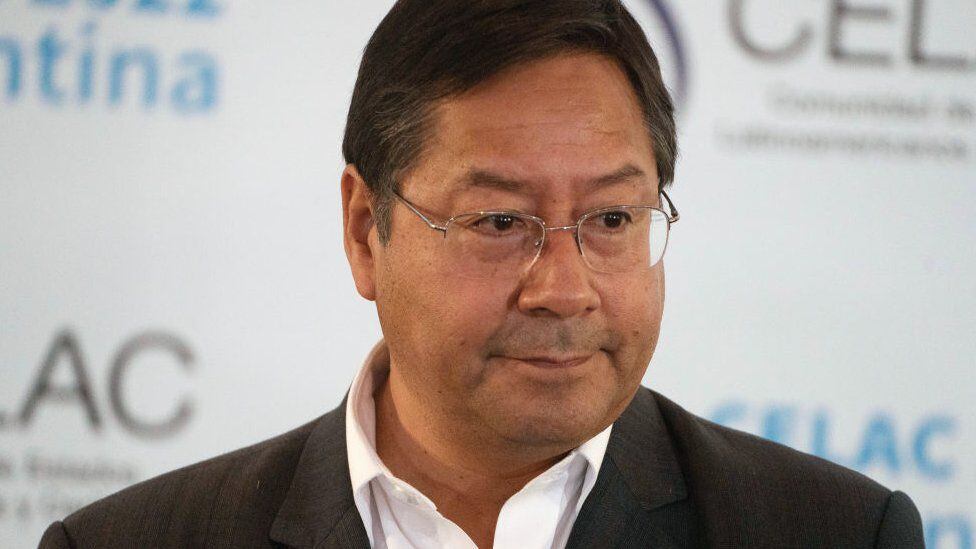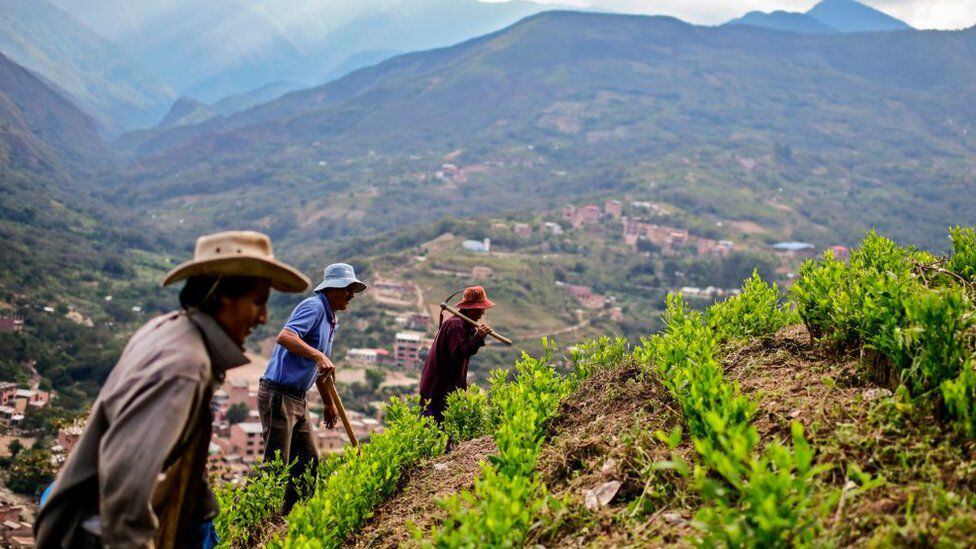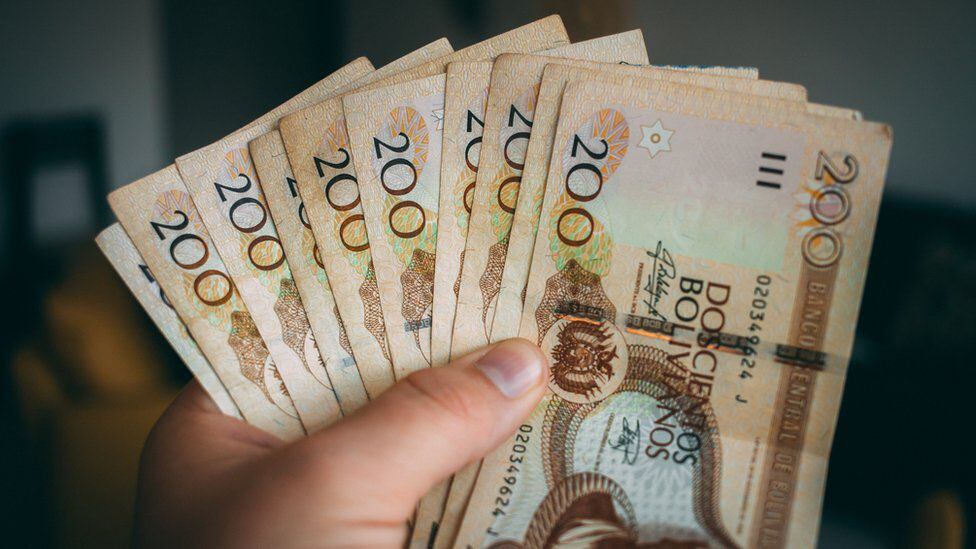The dollar has become a rare commodity in bolivian.
To the point that there are already experts who speak of “rationing” and a parallel market that has not been seen in the country for many years is growing.
LOOK: The dispute between China and the United States over lithium in Latin America
Since last March 9, the Central Bank has become almost the only place where you can get the currency and long queues of citizens have formed daily around it and since the end of March the local media report that you have to wait weeks for your money to be delivered in currency.
The government assures that the Bolivian economy is stable and the Minister of Economy, Marcelo Montenegroblamed what happened on “a speculative outbreak” which led to excess demand.
The analysts consulted believe, however, that what is happening is the result of mismanagement of economic policy and years of fiscal deficits that have ended up consuming international reserves.
BBC Mundo requested comments to the Ministry of Economybut got no response.
The shortage of dollars is seen as another sign of concern about the health of the Bolivian economy, a country that during the years of Evo Morales in the presidency (2006-2019) was presented as an example of sobriety and rigor in public accounts , despite its ambitious social programs.
How did this situation come to be?
What’s going on
The alarm bells went off at the beginning of marchwhen large lines of people began to form at the bank branches and exchange houses in Bolivia who wanted to withdraw or buy dollars.
Local media began to report that in most of them customers left empty-handed or found that the banks imposed restrictions on the amounts to withdraw due to a growing shortage of currency.
Until, in an apparent attempt to calm the situation, the authorities announced on March 8 that the Central Bank of Bolivia would sell dollars to anyone who requested it. Since then, large queues began to form at the bank’s headquarters in La Paz.
Roger Edwin Rojas, president of the Central Bank of Bolivia (BCB), promised the willingness of the Bank to “meet all the demand that may exist in the population.”
But apparently the measure has not been enough. The latest twist in the crisis came on March 28, when it was learned that the Central Bank was making an appointment to deliver the dollars weeks late, which aggravated the fears of observers who believe that the lack of dollars reflects that the country is about to exhaust its available international reserves.
“At first they were just rumors, but everything indicates that the situation in the country is not good at all,” one of the Bolivians who lined up told the AFP news agency.
Bolivia has a fixed exchange rate, established in 6.96 bolivianos per dollar, but the official reality seems to be being overwhelmed by the facts.
The economist Jaime Dunn told BBC Mundo that “those who need the dollars now accept a higher exchange rate as the price for getting the dollars immediately and the parallel market is growing, something that for years was unthinkable in Bolivia.”
What are the causes
The president of the BCB blamed the excess demand on the actions of disseminators of false news.
“The amount of dollars that we have put up for sale, the service that we are providing, extending all hours and so on, will allow us to mitigate this problem once and for all,” he said in an interview with state television.
Other experts are not so optimistic and see deeper causes.
The former president of the Central Bank Juan Antonio Morales said in a conversation with BBC Mundo that “Bolivia Accumulates high fiscal deficits since 2015 which have been largely financed with credits from the Central Bank and that is quite problematic”.
For Dunn, this has led to the fact that “international reserves have been aggressively consumed”
Those reserves, which in 2014 were around US$15.5 billion, are now at a record low of around US$3.5 billion.
With these resources some of the more generous social programs from the governments of Evo Morales first and Luis Arce later, such as the subsidy for the purchase of fuel, which Bolivia has to import and pay in dollars in international markets.
Added to this is the problem of the drop in gas production and exports from the state-owned YPF-B, with which the volume of dollars arriving in the country has also fallen.

Finally, there are the dollars that the Central Bank injects into the economy, often through state-owned companies, to contribute to exchange rate stability.
What consequences does the shortage of dollars have?
The dollar has traditionally had a leading role in the Bolivian economy. It is used in many transactions and It is the currency in which the value of all assets of heritage importance is calculated.l, like homes or cars.
Now the country is experiencing what Morales describes as “an exchange rate crisis.”
Many people think that the official value of the Bolivian, the national currency, with respect to the dollar does not correspond to reality.
AND the consequences are already being felt.
Dunn affirms that “exporters are desperate and since they have to face payments in dollars that cannot wait, they agree to buy dollars at 7.40 per boliviano, well above the official exchange rate of 6.96.”
This means an increase in their costs that, sooner or later, will have to end up having an impact on the consumerwhich “will cause tension on the price side,” predicts the expert.

This could break the exceptional trend in Bolivia, which stands out in the Latin American context as one of the countries that has best contained the inflationary wave that has swept the world in the last year.
The export sector is one of the hardest hit. If the shortage of foreign currency continues, the operations with which Bolivia supplies itself with essential items, such as fuel, which are traded in dollars, may be in jeopardy.
And then there is the question of trust.
Bolivia has been considered for years an example of fiscal balance and proof that poverty reduction policies do not have to be incompatible with budgetary rigor.
But in recent months, investors and financial analysts have been mounting doubts about the country’s economic situation, which has become clear in the plummeting value of Bolivian bonds in the international market and the interest required to buy them, which has increased by 32% in 2023.
However, the Ministry of Economy and Finance attributed the higher required yield on Bolivian bonds to “uncertainty in financial markets” caused by the war in Ukraine, the “international inflationary crisis” and the rise in interest rates throughout the world.
What can happen
The Central Bank reported in a recent statement of the “recomposition” of its special drawing rights, assets issued by the International Monetary Fund (IMF) to complement the international reserves of its member countries, with which it seeks “strengthen the liquidity position of net international reserves“.
Without giving more details of the exact meaning of this “recomposition”, the Central Bank stressed that “the conversion of the Special Drawing Rights to US dollars is an operation proper to the administration of the international reserves of the central banks and should not be considered like a loan.”
A clarification apparently addressed to those who think that Bolivia may end up resorting to help from the IMF in the absence of alternatives.
The government also announced an import substitution industrialization plan with which it hopes to increase the inflow of foreign currency through exports of gold, lithium and other raw materials.

Dunn indicates that the Central Bank has already taken some measures, such as “defending the Boliviano with a higher interest rate.” It is about discouraging everyone from wanting to exchange their bolivianos for dollars.
But Juna Antonio Morales does not believe that this will be enough.
“It is necessary a major fiscal adjustment and that adjustment could be painful”, he indicates. He believes that the government of Luis Arce may end up running out of alternatives to layoffs in the public sector and a monetary devaluation that would have been less traumatic if it had been undertaken on time.
If the devaluation were to take place, it would mean a reduction in national wealth and that the vast majority who have their bank deposits in Bolivians would see their value reduced.
The key question in Bolivia is if the Bolivian will hold out and for how long.
Source: Elcomercio
I am Jack Morton and I work in 24 News Recorder. I mostly cover world news and I have also authored 24 news recorder. I find this work highly interesting and it allows me to keep up with current events happening around the world.

:quality(75)/cloudfront-us-east-1.images.arcpublishing.com/elcomercio/GE3DCMZNGA2C2MJTKQYDAORRGY.jpg)

:quality(75)/cloudfront-us-east-1.images.arcpublishing.com/elcomercio/I3MLNUB7HRHBJFRGW6PCY3CEQY.jpg)

:quality(75)/cloudfront-us-east-1.images.arcpublishing.com/elcomercio/GIYTANJNGEZC2MJQKQYDAORSGE.jpg)
:quality(75)/cloudfront-us-east-1.images.arcpublishing.com/elcomercio/527CU7W57JGXBBFW2KP2OXLAYU.jpg)
